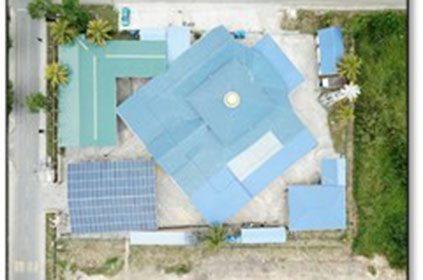Solar Inverter: Brain of your solar system
Professional care and maintenance are important to keep your equipment at their optimal condition. Keeping your investment to bring back their intended return and perform to their designed standard.
Professional care and maintenance are important to keep your equipment at their optimal condition. Keeping your investment to bring back their intended return and perform to their designed standard.
The Ministry has introduced few solar PV initiatives to encourage Malaysia’s Renewable Energy (RE) uptake. From the RE townhall held on 12th July 2018, one of the key issues highlighted by the PV industry is the need to change the concept of NEM from the existing net billing to true net energy metering. This is will help improve the return of investment of solar PV under the NEM. Effective on 1st January 2019, the Net Energy Metering (NEM) will be improved by adopting the true net energy metering concept and this will allow excess solar PV generated energy to be exported back to the grid on a “one-on-one” offset basis. This means that every 1kWh exported to the grid will be offset against 1kWh consumed from the grid, instead of at the Displaced Cost previously.
The quota allocation for NEM is 500 MW up to year 2020. Quota allocation will be divided into domestic and non-domestic category. The NEM category has been divided into 4 categories namely Residential, Commercial, Industrial and Agriculture. The new NEM scheme is only applicable to Peninsular Malaysia and applicants must be registered TNB customers. NEM is executed by the Ministry of Energy, Science, Technology, Environment and Climate Change (MESTECC), regulated by the Energy Commission (EC), with Sustainable Energy Development Authority (SEDA) Malaysia as the implementing agency. – source Sustainable Energy Development Authority Malaysia (SEDA).
Self-consumption or known as SELCO applies when electricity is being generated for own usage and any excess is not allowed to be exported to the grid. The Government is encouraging individual, commercial and industrial consumers to install solar PV for their own consumption, looking to hedge against the rising cost of electricity. Download the guideline here.
Source Sustainable Energy Development Authority Malaysia (SEDA)
Solar inverter plays a crucial role in your solar system, regardless of scale, they are the commander who directs how the energy generated by solar panel interact with the overall power system. When the sun shines on your solar panel (or solar photovoltaic (PV) system), electrons move around within the solar cells to produces direct current (DC). Circuits within the cells collect that energy for your consumption.

Inverter then converts the DC energy into alternative current (AC) for common appliances operation. They also regulate the charging and discharging current for batteries in off-grid or hybrid systems.
Energy collected from PV arrays is managed and monitored by the solar inverter. They are equipped with maximum power point tracking (MPPT) to maximize the potential of your PV arrays.
Just like any power generation device, protection is paramount for the safety of its consumer. Those protections are built into the solar inverter to protect the solar system, some even come with remote notification when faults detected.

On-grid or grid-tie system is connected to utility supply and is by far the most commonly deployed for Feed-in Tariff (FiT) and Net Energy Metering (NEM) systems. On-grid inverters synchronize with utility supply to provide energy wherever possible. For safety reasons, the system will not function during blackout. Since feeding the damaged grid would jeopardize the safety of personnel repairing the fault in utility network.

Off-grid or standalone power system is connected to battery and diesel generator as secondary power source. Being energy independent or self-sufficient, they are not connected to the grid hence no synchronization is required; however, they need to draw power from battery and send signal to start up the generator when solar power is insufficient or unstable. Off-grid systems are commonly deployed in remote areas where connection to utility power is unavailable.

Hybrid systems are connected to the grid while being supplemented by battery system. They can be configured differently depending on inverter and battery technology. Modern hybrid inverters are incorporated with high voltage MPPT controllers and battery inverter/charger. Blessed with long hours of sunlight in Malaysia, it makes sense for hybrid system design that can help to extend your energy independence. Hybrid system also allows you to shave off your maximum demand charges which can be as high as 20% of your electricity bill.
Measure, analyze, design, construct, and maintain.